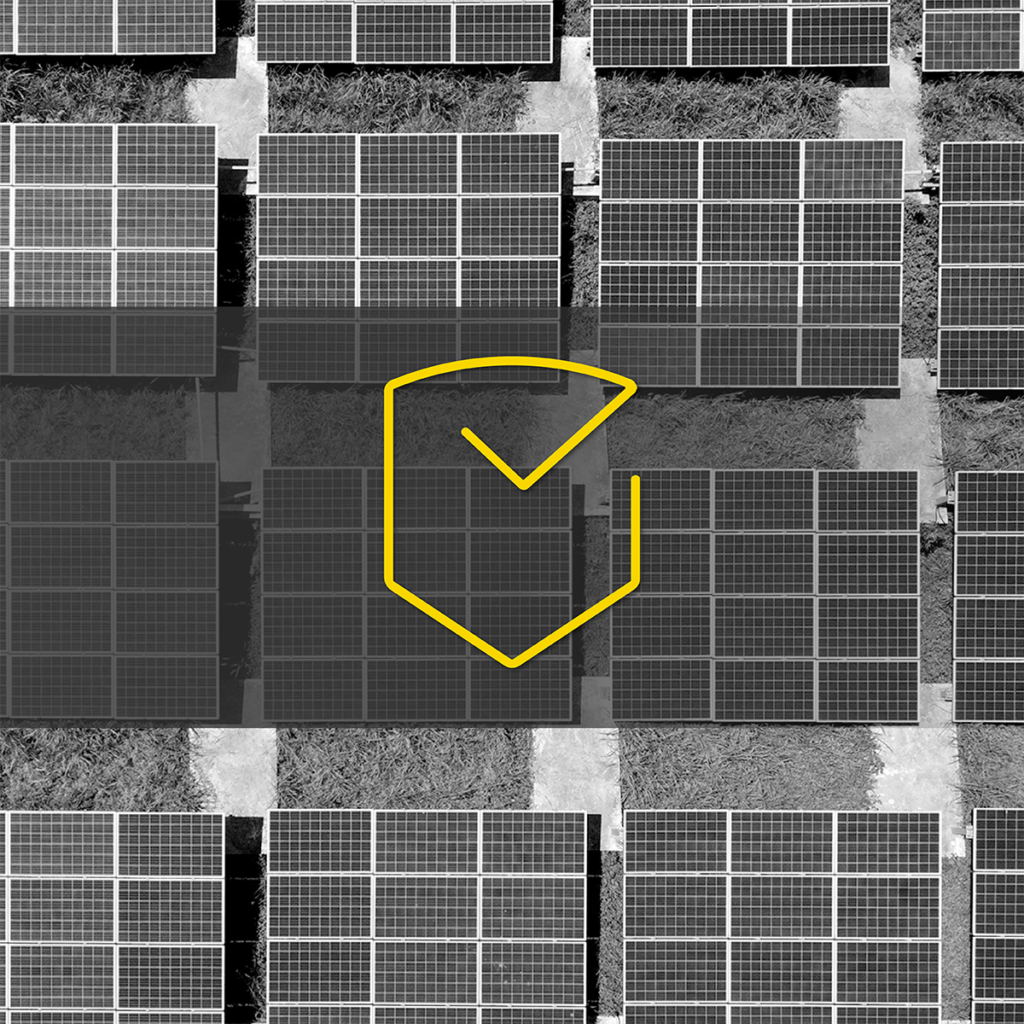
The energy transition in Ireland has entered a new stage of development, characterized by the rapid growth of renewable energy sources. Today, small-scale solar power plants can be seen on the rooftops of residential properties, at business premises, and, on a slightly larger scale, on unused land, meadows, and even water bodies. Safe usage of these installations is only possible when two key factors are ensured: installation compliance with industry standards and the use of certified materials. This article takes a closer look at these aspects.
Identifying Risks in PV Installations
A crucial step in ensuring the safety of solar panel installations is the identification of potential hazards. At this stage, every installer and investor should consider various sources of risk and ways to minimize their impact. Particular attention should be paid to:
- Fire risks – PV devices are often installed on rooftops, which increases the risk of fire hazards.
- Certification of equipment – How do you differentiate safe materials from those that pose risks to the entire installation? Certificates provide crucial guidance.
- Electrical hazards – Solar PV systems generate electricity, bringing risks such as electric shock, short circuits, and voltage surges.
- Structural components – The weight of PV equipment can affect a building’s structure, especially its roof.
Fire Hazards in PV Installations
Can a solar installation cause a fire? Yes, if it is improperly installed. The most common causes of such incidents include:
- Weather conditions (e.g., lightning strikes),
- Installation errors (especially concerning plugs, cables, and connectors),
- Equipment failures due to inadequate ventilation,
- Incorrect design assumptions (e.g., improper cable sizing),
- Lack of regular maintenance.
PV system design should adhere to a range of standards, including I.S. EN 62852:2015, I.S. EN 61439-2:2011, and I.S. EN 50565-1:2014-11. Installation should be performed by certified professionals with the necessary qualifications. Furthermore, guidelines from the Solar PV Code of Practice should be followed, particularly:
- Installing panels with consideration of the building’s structure and fire safety,
- Using DC connections with connectors of the same type and manufacturer,
- Minimizing the number of DC connections,
- Routing cables in metal conduits while reducing sharp edges,
- Labeling installation elements in accordance with I.S. EN 60364-7-712,
- Marking cable routes,
- Placing a fire extinguisher near the inverter.
The quality of purchased materials also significantly affects fire safety.
Certification of PV Equipment
The choice of materials should be carefully considered. PV modules must comply with the Low Voltage Directive (LVD) 2014/35/EU and meet several harmonized and non-harmonized standards, including EN IEC 61730-1, EN IEC 61730-2, and EN IEC 61215-1:2021.
Regarding fire safety, resistance to thermal shock and moisture is crucial. These properties are tested through thermal cycling (TC) tests and damp heat (DH) tests. Leading brands in these assessments include LONGi, Jinko Tiger, Trina Solar, JA Solar, Canadian Solar, and Q-Cells. When purchasing modules, it is also advisable to check certifications for:
- Potential-induced degradation (PID) resistance,
- Micro-crack resistance,
- Resistance to salt mist, ammonia, sand, and dust (certifications: IEC 61701, IEC 62716, IEC 60068).
A PV system comprises multiple components, so verifying compliance with standards such as:
- NC RfG certificate (confirming compliance with grid connection requirements for inverters),
- I.S. EN 50618:2015 (electric cables for PV systems),
is essential.
Electrical Safety
Any work conducted on electrical equipment and power networks poses risks such as electric shock, overvoltage, overload, or short circuits. To minimize these risks, PV installations should be equipped with protection systems. For home and business-scale microgeneration, this includes:
- DC fuses (Level I and II), which disconnect PV modules in case of a short circuit,
- DC circuit breakers, protecting wires and system elements from current-related failures,
- Grounding systems, ensuring protection against electric shock,
- Lightning protection systems, safeguarding against direct lightning strikes,
- Surge protection devices, protecting the PV system from voltage spikes.
This list may be extended depending on project requirements.
Structural Considerations
European regulations do not provide precise guidelines to ensure the structural safety of buildings in the context of PV installation. In Ireland, investors and installers are not required to conduct a technical assessment of the roof to evaluate the additional load’s impact. However, such an assessment considers standards related to:
- Structural design principles,
- Snow load requirements,
- Wind load requirements,
- Concrete structures,
- Steel structures,
- Timber structures.
The final assessment of roof strength is influenced not only by the weight of the PV modules but also by snow and wind loads, the weight of the mounting structure, and ballast blocks. Preparing a structural report ensures that under normal usage conditions, the PV installation does not negatively impact the building’s architecture.
Testing and Operation
Upon installation completion, performance testing should be conducted according to I.S. EN 60364-6:2016-07. This includes fundamental and supplementary tests for electrical installations, such as:
- Polarity testing,
- Continuity testing of conductors,
- Insulation resistance testing for AC and DC wires,
- Earth resistance testing,
- Loop impedance testing and assessment of shock protection,
- Voltage and current measurements of module strings.
Optional tests may include IV curve measurements and thermal imaging inspections, which help verify the installation’s accuracy.
User operation also plays a role in safety. The PV installer should provide as-built documentation and user instructions outlining key operational guidelines. It is particularly important to adhere to maintenance recommendations to ensure the long-term performance and safety of the solar installation.
